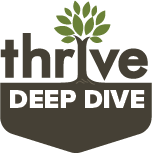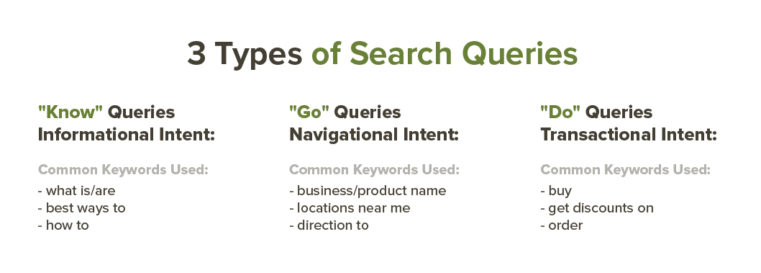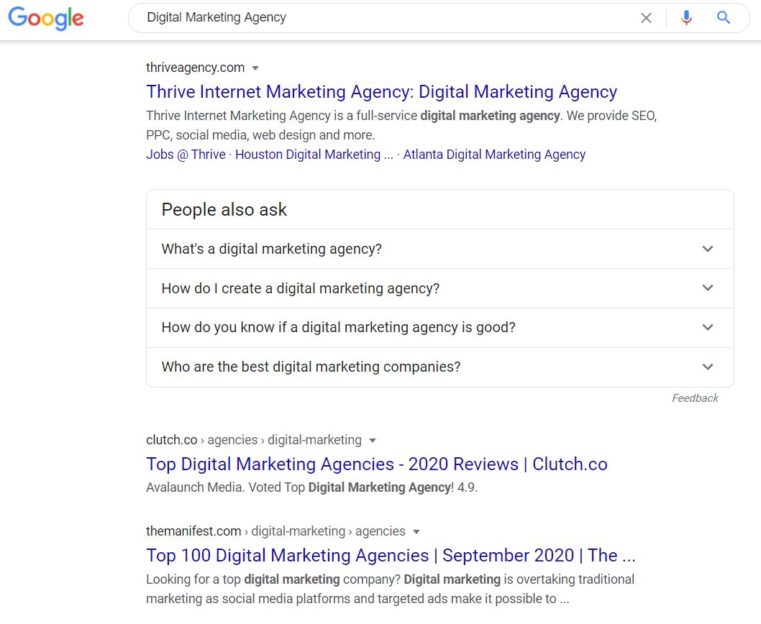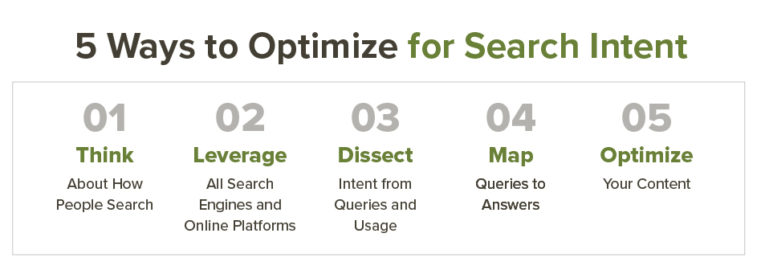The ultimate goal of search engines is to satisfy search intent. If you’re a business owner, providing relevant information that matches your customers’ search queries helps build your online credibility.
Every day, billions of users rely on search engines to carry out their daily searches. Statistics show that Google processes over 3.5 billion searches per day. To reinforce your brand and ensure your marketing success, it is crucial that you build a strong online presence.

You must ensure your company is at the forefront of search results when your target audience search for information relevant to your product or service. However, simply having a website is not enough to influence your customers’ purchasing decisions.
To build a robust online presence and attract relevant leads to your site, you need to understand the consumers’ search intent. In this way, you can implement the right search engine optimization (SEO) strategy. Analyzing user intent also allows you to expand your market and grow your customer base.
What is Search Intent?

Search intent is also known as keyword or user intent. It pertains to the reason people conduct a particular online query.
Searching is an applied social science,” said Matt Garrett, Thrive’s SEO strategist. “It’s how we study what people do, what people think, how they interact with data and what we can do with that.”
As marketers, understanding the psychology behind search queries is integral in establishing your brand’s online presence. Studies show that most decisions are made to either gain pleasure or remove pain.
Pain and pleasure are fundamental driving forces behind every individual’s search intent. For instance, a person that needs immediate pain relief to a sore muscle might turn to Google to find the best remedy. An example of a pleasure-driven search query, on the other hand, is a user seeking out reviews of the best tourist attractions in Texas. This user is likely to search on Google the best places to visit in Texas to reward himself with a getaway or some downtime after a week’s hard work.
The core objective of Google Search is to provide immediate answers to these, and any other search queries.
Google’s operation revolves around providing an excellent search experience,” Garrett said. “To do that, we need to take tons and tons of user data, process it, make sure that every search provides the desired result. We need to find different connections between content, the thought of the person, the site experience. Take all of it, process it, produce desired results.”
Why Does Search Intent Matter for SEO?

Search engines have gotten smarter. Search engines have shifted the focus from keyword optimization to the users’ experience.
Today, it’s no longer enough to integrate keywords into your content. You need to present users with valuable information that matches and expands on their Google search query. “From backlinks to load speeds to page domain and trustworthiness,” Garrett said, “Google will use all these signals to decide whether a web page answers a user query.”
Search intent optimization allows you to:
• Fulfill the needs of your target audience
• Attract sustainable, qualified leads to your site
• Keep customers on your page
• Position your company as an authority in your respective industry
• Boost your brand awareness
Individuals use search engines to look for information, find a product or service or for entertainment. As a business owner, you need to zero in on these moments to appeal to the right customers. Understanding why or how online users search for certain types of information unlocks vast opportunities to enhance your optimization strategies.
What are the Different Types of Search?

Now that we’ve established the significance of user intent, let’s get started with the search query optimization. The first step is understanding the various types of search intent.
There are three types of search queries:

1. Informational Intent or “Know” Queries
These are generic searches that aim to learn more about a particular topic. For instance, a client might search for “what is online reputation management” on Google, before hiring a company for the service.
Sample keywords used in informational queries are:
• what is/are
• best ways to
• how to
2. Navigational Intent or “Go” Queries
These are searches conducted by users who already have a particular company or product in mind, but need help getting to a specific page.
For example, a customer may search for “Thrive pay-per-click marketing.” The client wants to know more about Thrive’s PPC services, so she goes to Google to find the web page.
Sample keywords used in navigational queries are:
• business/product name
• locations near me
• direction to
3. Transactional Intent or “Do” Queries
These are queries aimed at completing a desired action, such as buying a product or subscribing to a newsletter. Examples of transactional search queries are “best coffee maker under $200” and “free online marketing guide 2020.”
Sample keywords used in transactional queries are:
• buy
• get discounts on
• order
To gain a competitive advantage, you need to accommodate all types of searches on your website. However, this can be challenging if you don’t have an in-depth knowledge of how search algorithms work and what people want out of a search.
So how can we use this information in analyzing an online search? The next step is to learn how search engines process user queries.
Understanding How Search Algorithms Work
Search engines have ranking systems designed to sort out billions of information in a split second. This system allows search engines to find and present the most relevant information to search queries.
Google sorts out web pages that contain the keywords on your search. It then ranks each page based on several factors, such as keyword density, location and relevance and usability of pages to the search query.
Higher ranked pages appear on the first page of search engine results pages (SERPs). This means that the best links relating to your Google search query are theoretically at the top of SERPs. But this may not always be the case. Users get different search results depending on the location, user intent and algorithm variations.
Why Do Search Results Vary?
Search engines have developed multiple tools to help display a wide variety of information in digestible pieces. Now, the goal of search engines is to deliver the most accurate and relevant results for each user. That is why search results are entirely personalized and intentional.
Several factors influence search results. These include:
• Location — Every device connected to the Internet is assigned a unique string of numbers called an Internet Protocol (IP) address. Search engines use your IP address to provide customized search results. This is the reason your website may rank on a particular location, while it may be invisible to others.
• Search History — No matter if you’re signed in to your account or not, search engines deliver personalized search results based on your previous online activities. These include your past searches and previously clicked links. Even the device or Google account you used can affect the search results.
If you log in to your account, the personalization goes even further. For instance, if you regularly visit a specific site or type in the same set of keywords, search engines will learn your habits and prioritize these sites in delivering results on your next search.
• Algorithm Changes — Google regularly updates its algorithm. Some users may be searching on a Google version where algorithm changes have taken effect. Those using a different version may see varying search results. In many cases, this can affect your site ranking and traffic.
A single search can mean hundreds of different things. That is why search engines are constantly developing smarter systems to deliver more accurate and highly-relevant search results.
One Query, Multiple Intents
Search engines may not always know what you’re looking for. “[Google] has to make a bunch of inferences based on what other people have done with that data, what data is currently available, what’s trending,” Garrett said.
For instance, try searching for “digital marketing agency.” Now, search engines will present a variety of information about digital marketing. Most likely, the top best online marketing companies will show up on the SERPs.

This is an example of an informational search. “If most users find that they have something to click in that first search, or simply put, that Google answered their question,” Garrett said, “the search results will continue to appear like this for that specific query. Google did its job and provided a user with an answer.”
However, when you don’t see the information you need, there are several options you can take to acquire your desired results. Your next steps may vary based on what you’re familiar with or willing to tolerate. Depending on your intent, you may:
• Append details to your search query to get a more specific answer (e.g., digital marketing agency advantages and disadvantages)
• Search for related or alternative terms (e.g., online marketing company near me)
• Try a different search platform (e.g. you may try other search engines like Yahoo or Bing)
The cycle goes on until you find the most relevant, useful information to your Google search query. “If a lot of users start searching this query and then research something else, or bounce back to this search multiple times or go to the second page, or worse back out entirely, Google’s rankings and [Google] Display may change,” Garrett said. “Google failed its job –the user needed to input additional information to get the answer they were looking for.”
What does this mean for business owners and marketers like you?
Often, when creating a digital marketing strategy, companies get wrapped up in the metrics and forget about their target audience. Through search intent optimization, you can build a robust SEO foundation and at the same time, provide valuable answers to your customers’ search query.
Breaking Down Queries
Before doing keyword research or creating content, you must understand why and how customers are searching. “Think about how people search and what they use that information for,” Garrett said.
Every search query aims to solve a problem. People search the web to:
• Acquire quick response to their query — waiting for information can be difficult and frustrating
• Gain trustworthy information — online users expect accurate information to help them make informed decisions
• Get detailed answers — customers want immediate, digestible and comprehensive answers to their search query
The reason that people use Google as much as they do over third-party searches is because their search experience is so much better because they use so much more information,” Garrett said. “The more people use it, the more empowered that engine becomes, the better the results get. And overtime, more and more trustworthy information will rise to the top and less trustworthy information will disappear into the second page of Google, which no one has ever seen.”
Unsurprisingly, getting listed at the top of Google SERPs is the goal for most (if not all) businesses. Companies that earn high rankings on Google also earn trust from online users.
To improve your Google rankings, you need a robust SEO strategy. First, determine how your customers search for your business or product online. What terms or phrases do they search on the web? Which online platforms do they use to acquire information? Do they reside within your business’ service location?
Aside from understanding your customers’ search intent, you also need to uncover your company’s unique selling proposition (USP). What products or services are you offering? What particular customer query does your company solve? Why should your target audience visit your website?
These questions will help you determine the value of your business to your target customers. Remember, online users have heightened expectations for immediate, useful information. As such, you need to provide them with exactly what they need without forcing them to take several actions. Otherwise, they will move to the next search result.
Optimizing for Search Intent

A data-driven search query optimization strategy will attract the right customers to your site. More importantly, it will keep the bounce rate at a minimum.
Here are some of the best ways to optimize your web pages for search intent:
1. Think About How People Search
The key to optimizing for user intent is to ensure you are using the right tools and implementing the best optimization practices. Here are some tips to keep in mind when assessing search intent:
• Use tools, such as Google Webmaster Tools, YouTube Analytics and Bing Webmaster Tools
• Study impressions, clicks, click-through rate (CTR) and average site ranking
• Replicate search experience from the customers’ point of view
• Analyze the results
• Think about what people might be looking for
These tools and practices will help you determine how many times queries were used and how many of those resulted in page visits. They also let you see the rate at which impressions generate a click. In addition, these tools show your average ranking in the organic search results for a specific keyword.
Studying these results can get you all sorts of new insights into how people find you,” Garrett said, “and breaks you away from any biased thinking about how people use [Google] Search.”
2. Leverage All Search Engines and Online Platforms
Ignoring other search engines on your optimization strategies could mean missed opportunities to rank on them.
Although Google is the most popular search engine, you also need to take active steps to rank higher and better on other platforms, such as YouTube and Bing.
YouTube is the second most popular social media platform. It has approximately 2 billion users worldwide. This means that the more views your video content gets, the higher it will rank for a variety of your target keyphrases. However, “if you’re not writing the right topics, if you don’t have closed captions, if you don’t have any description or information that they can’t get other ways,” Garrett said, “people won’t find that video.”
Bing is another online platform that is almost always taken for granted. Even though few people use Bing, a certain percentage of online users don’t install Chrome and still use Linux-based windows 10. This means that their default search is Bing. “So if you’re ignoring Bing, you’re ignoring an entire subset of people who really don’t care as much about the Google experience,” Garrett said.
3. Dissect Intent from Queries and Usage
Online users have preferences they won’t always explicitly share. As a marketer, you need to optimize your content for both presented intent (active queries) and hidden intent (passive queries).
Active queries are search intent that are explicitly described by the query syntax. Passive queries, on the other hand, are search intent that you need to draw out from insight.
For example, you may search for “the best SEO company in Houston.” Now, this search query explicitly asks (active intent) for a list of SEO agencies in Houston. It also implicitly asks (passive intent) for other information, such as maps, reviews and photos.
Satisfying both active and passive queries is significant in driving user engagement and conversion. In doing so, you provide immediate, valuable information to your target customers. Moreover, you create value by addressing your audience’s passive intent.
4. Map Queries to Answers
It can’t be overemphasized that online users have varying search intent –and they don’t always say what they mean. So how can you determine and understand your customers’ preferences? How can you be receptive to their needs?
As a business owner, you need to map out and optimize for the presented and hidden user intent. Here are a few tips you can follow when mapping search queries:
• Think about the different ways people may ask questions to a search engine
• Analyze the difference in verbiage and length of query
• Consider various cultures, languages and religions
• Determine how people from multiple locations might search the web
• Check your target audience’s local language demographic
• Think about product limitations that your prospects and clients would want to know
• Consider how people use different tools to access Google Search, such as mobile, desktop and voice
Mapping search terms allows you to make specific SEO recommendations to help improve the relevance of your website to search queries.
If you aren’t capturing people at the most basic level of what you serve,” Garrett said, “then you need to do a better job at explaining that information and offering those services in a new place.”
5. Optimize Your Content
Search intent optimization is all about providing your target audience the best answers to their immediate needs. The faster your content answers the users’ query and satisfies their demand, the higher the chances they will scroll down the page instead of moving on to your competitors’ site.
The key to effective Google search query optimization is to provide consistent, detailed information on your website and across online platforms. Remember, your content exists beyond your website. Follow these steps to optimize your content for search intent:
• Present your content into bite-sized, digestible pieces
• Strategically place keywords within the content
• Include relevant keywords in the URL, metadata and headlines
• Provide clear steps on how to solve a problem
• Include useful images and graphs
• Create long-form blog posts that address your customers’ specific needs
• Leverage internal linking
• Include a strong call-to-action
When you’re optimizing content, organizing details, options, information,” said Garret, “think about who’s receiving that information. How can you solve their problems?”
Build a Data-Driven, User-Centric SEO Strategy

Research shows that 93 percent of online experiences start with search engines. This means that ranking high on relevant search queries can build your brand’s online presence in exponential ways. Search intent optimization can help you cater to your target customers’ needs and boost your brand’s online credibility and authority.
Make sure to follow these tips in optimizing for user intent:
➔ Build pages that address users’ explicit and implicit questions
➔ Make your content informative
➔ Balance detail and conciseness on your web pages and blog posts
➔ Learn from user experience using conversion rate optimization (CRO) tools and questionnaires
➔ Explore new content topics and provide relevant information
➔ Facilitate your customers’ online search by providing FAQs, table of content and precise navigation
➔ Create compelling titles and meta descriptions
➔ Provide correct, consistent information across all networks
➔ Avoid concealing information behind a login or paywall
➔ Make information accessible, simple and digestible
Is Your Website Optimized for Search Intent?
If you’re not implementing the best search query optimization practices yet, it’s high time that you start. Partner with a digital marketing agency that can help you build a robust connection with your target customers. Choose an SEO company that implements proven optimization strategies and positions your business in front of a broader audience scope online.
At Thrive, we run an in-depth SEO audit and audience analysis. Doing so allows us to understand your customers’ online behavior and leverage opportunities to optimize for search intent. Let’s work together on improving your customers’ online experience. Contact us now!








